The Dutch East India Company (VOC) was emblematic of its era’s economic and cultural dominance, playing a significant role in global trade and, at times, the stealing of cultural artifacts. Established in 1602, the VOC was a powerful trading entity that operated primarily in Asia, where it extracted and exported valuable resources.
At its peak, adjusted for inflation, the company’s market cap would have been worth around $7.9 TRILLION. For comparison, Google is currently sitting at a $1.9 Trillion market cap. The VOC is sometimes considered to have been the world’s first multinational corporation. In addition to its commercial activities, the VOC was also involved in the acquisition of cultural artifacts, often taken from colonized regions as part of its military campaigns.
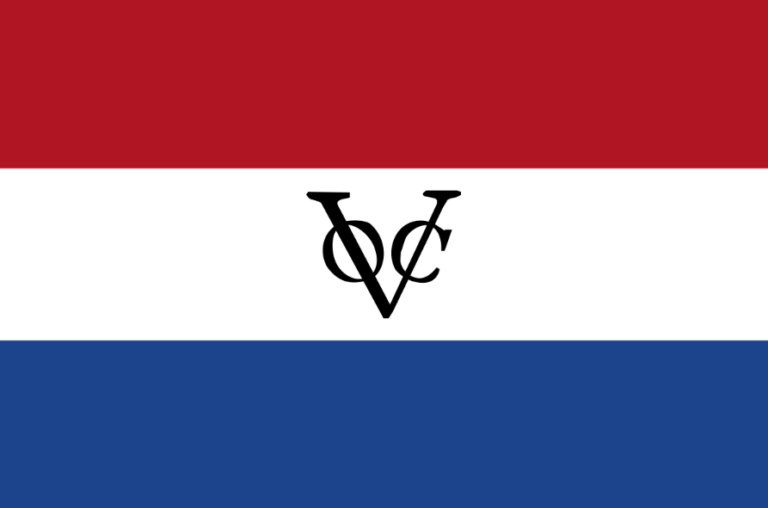
Dutch East India Company (VOC): Global Trade and Cultural Theft
The VOC’s operations often involved the extraction of valuable goods such as spices, silk, and tea, but its impact went beyond commerce. For example, during the siege and plunder of Kandy (a city in the Central Highlands of Sri Lanka) in 1765, VOC troops looted significant cultural artifacts, including the Cannon of Kandy—a ceremonial weapon richly adorned with gold, silver, and rubies. This artifact was taken to the Netherlands and remained in the collection of the Rijksmuseum until its recent restitution to Sri Lanka on August 28, 2023.
The VOC’s acquisition of cultural treasures through military conquests and trade around the globe played a critical role in shaping its legacy, which has led to ongoing discussions about the ethics of colonial-era artifact collection and restitution. In recent years, Dutch museums have returned looted items to their countries of origin, reflecting a broader global movement toward addressing the injustices of the removal of such treasured items from their homeland.
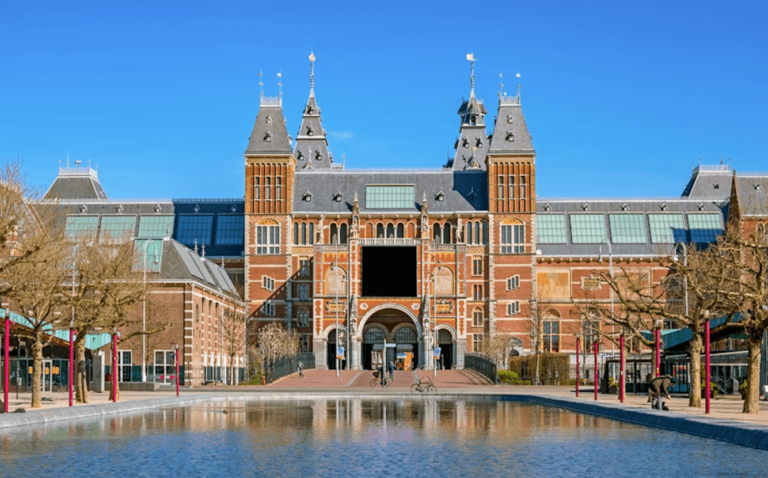
The VOC’s Cultural Impact and Legacy
While the VOC’s primary focus was on trade, its legacy includes a lasting influence on art and culture, particularly in the Netherlands. Through its global operations, the VOC helped introduce exotic materials and cultural objects into Dutch society. These items were often displayed in the homes of the Dutch elite, contributing to a broader fascination with collecting art and artifacts from the farthest corners of the world. In addition, the VOC’s extensive trading network facilitated the spread of Dutch artistic styles and craftsmanship, which had a lasting impact on European art during the 17th and 18th centuries.

The acquisition of cultural artifacts by the VOC continues to be a contentious issue today. As the global conversation about colonialism and restitution grows, institutions such as the Rijksmuseum have engaged in dialogues about returning cultural treasures to their rightful owners.
Below are a few accounts of specific instances where the Dutch acquired artifacts through conquest and looting:
1. The Seizure of the Santa Catarina (1603)
On February 25, 1603, the VOC captured the Portuguese merchant carrack Santa Catarina near Singapore. The ship was laden with valuable goods, including a significant quantity of Ming Chinese porcelain. The sale of these seized items substantially increased the VOC’s capital and introduced “Kraakporselein” (carrack porcelain) to the Dutch market. This event also sparked legal debates on maritime law and the ethics of seizing vessels during peacetime.
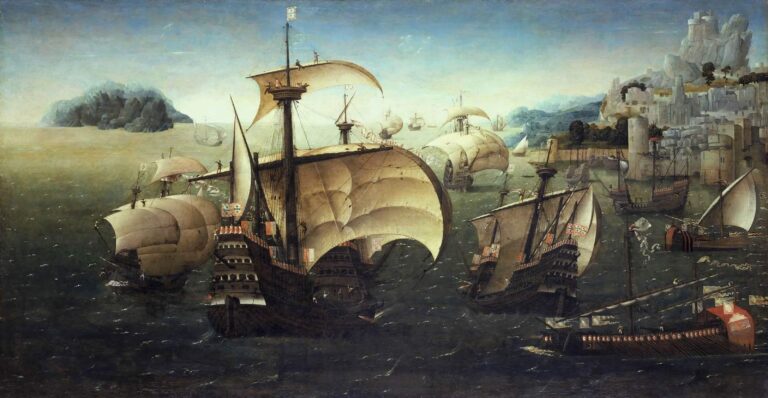
2. The Plunder of Banda Islands (1621)
In 1621, under the command of Governor-General Jan Pieterszoon Coen, the VOC launched a brutal campaign against the inhabitants of the Banda Islands in Indonesia. The indigenous population was decimated, with approximately 15,000 islanders killed or driven away. Following this massacre, the VOC established nutmeg plantations, heavily guarded by forts, to monopolize the lucrative spice trade. This violent takeover led to the acquisition of land and resources that had previously belonged to the native Bandanese people.
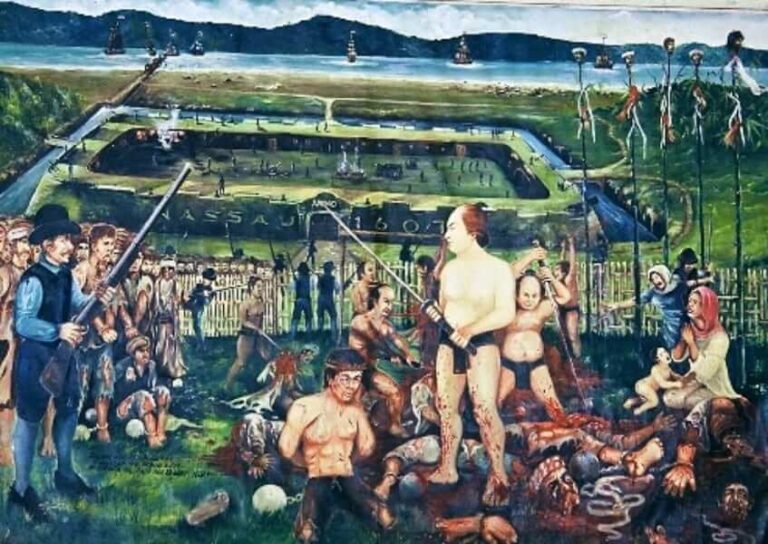
3. Occupation of Tiruchendur Temple (India, 1646-1648)
Between 1646 and 1648, during conflicts with the Portuguese, the VOC occupied the Murugan temple at Tiruchendur in present-day Tamil Nadu, India.
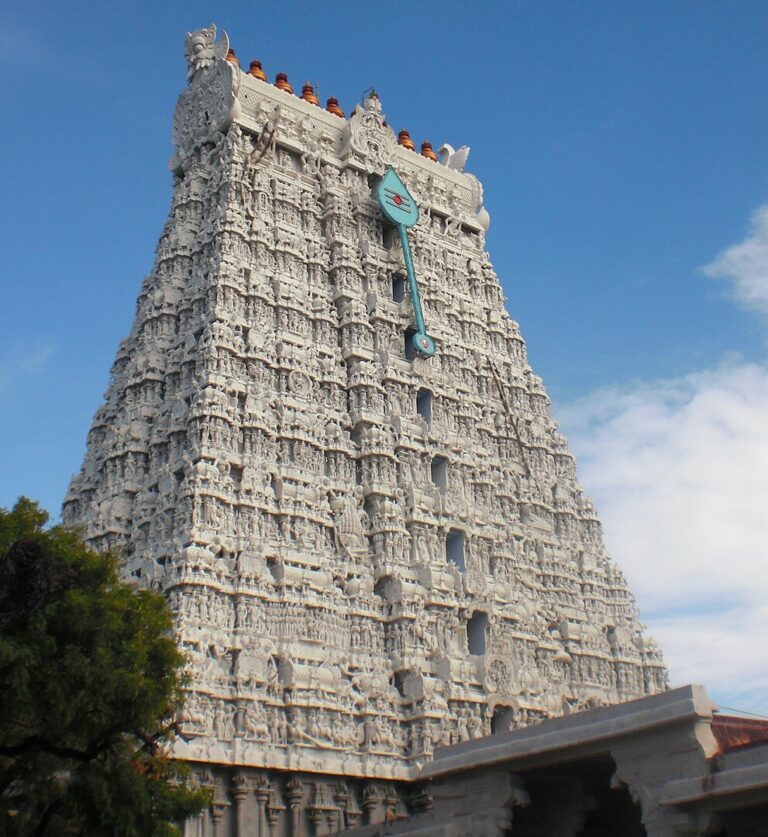
Upon vacating the temple, Dutch forces removed the idol of the main deity, Lord Murugan, and transported it to Galle in Dutch Ceylon (now Sri Lanka). The local populace, deeply devoted to the deity, made persistent efforts to recover the idol. After prolonged negotiations involving local leaders and the Madurai Nayakar, the idol was eventually returned and reinstalled in the temple in 1653.
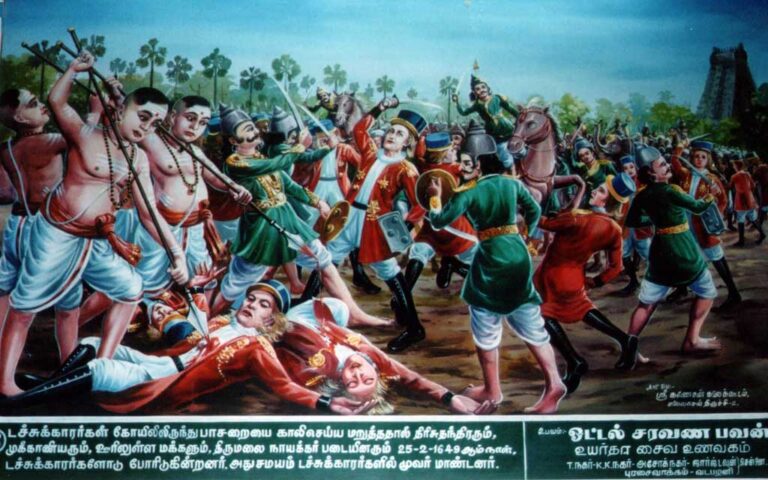
4. The Cannon of Kandy (Sri Lanka, 1765)
In 1765, during the siege and plunder of Kandy, the capital of the Kingdom of Kandy in present-day Sri Lanka, VOC troops seized numerous treasures, including a richly decorated cannon. This ceremonial weapon, known as the Cannon of Kandy, is crafted from bronze, silver, and gold, and is inlaid with rubies. The barrel features symbols associated with the Kandyan monarchy: a sun, a half-moon, and a Sinhalese lion. After its confiscation, the cannon was transported to the Netherlands and became part of the Rijksmuseum’s collection in Amsterdam. In July 2023, recognizing its historical and cultural significance, the Netherlands announced the restitution of the Cannon of Kandy to Sri Lanka and it was returned the following month.
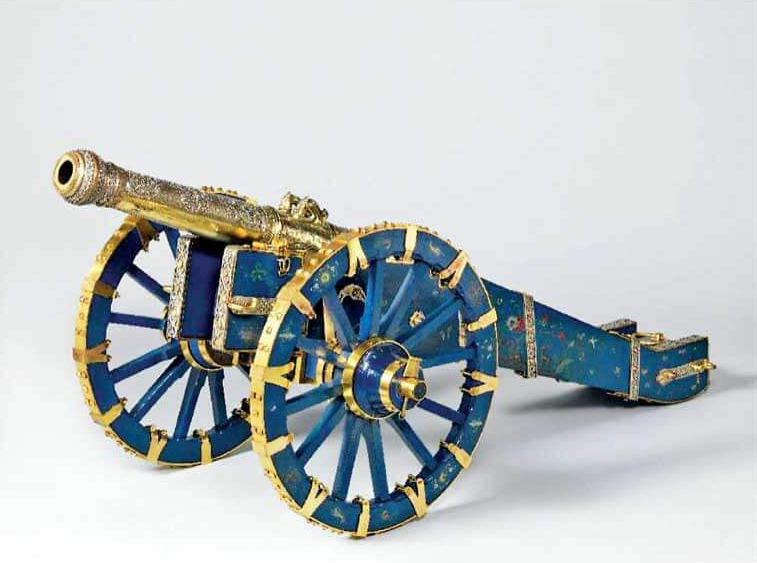
5. Acquisition of the Banjarmasin Diamond (1859)
During the Banjarmasin War in 1859, the Dutch colonial forces seized a 70-carat rough diamond from the Sultanate of Banjarmasin, located in present-day Indonesia. This diamond was sent to the Netherlands and became part of the state treasury. The means of acquiring such treasures during military conflicts underscores the colonial practices of resource extraction.
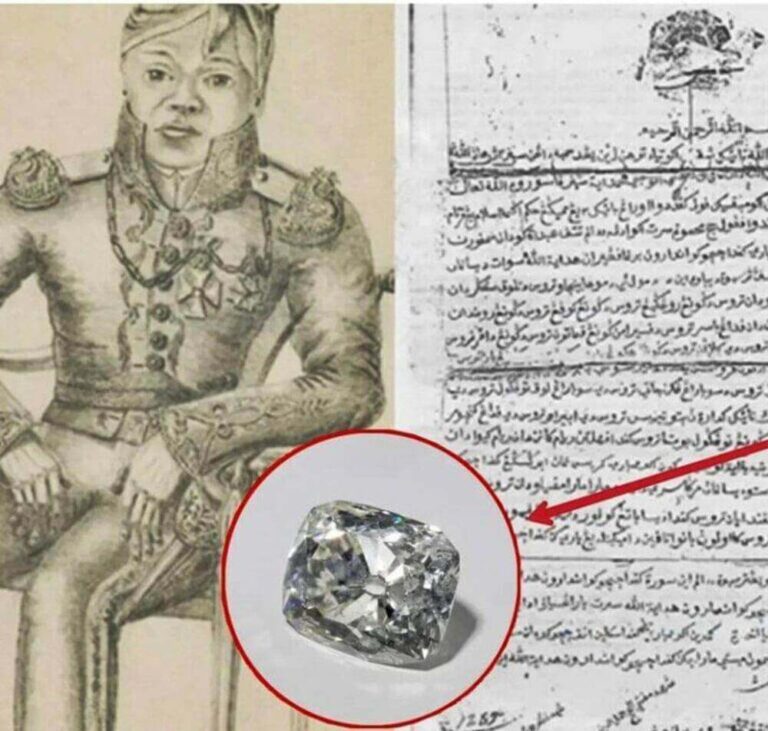
6. Confiscation of the Java Man Fossils (1891)
In 1891, Dutch anatomist Eugène Dubois discovered the fossilized remains of “Java Man” (Homo erectus) in Java. These significant anthropological finds were transported to the Netherlands, where they have been housed since. The removal of such fossils has raised ethical questions about the involvement of colonized regions and taking prehistoric human remains from other lands.
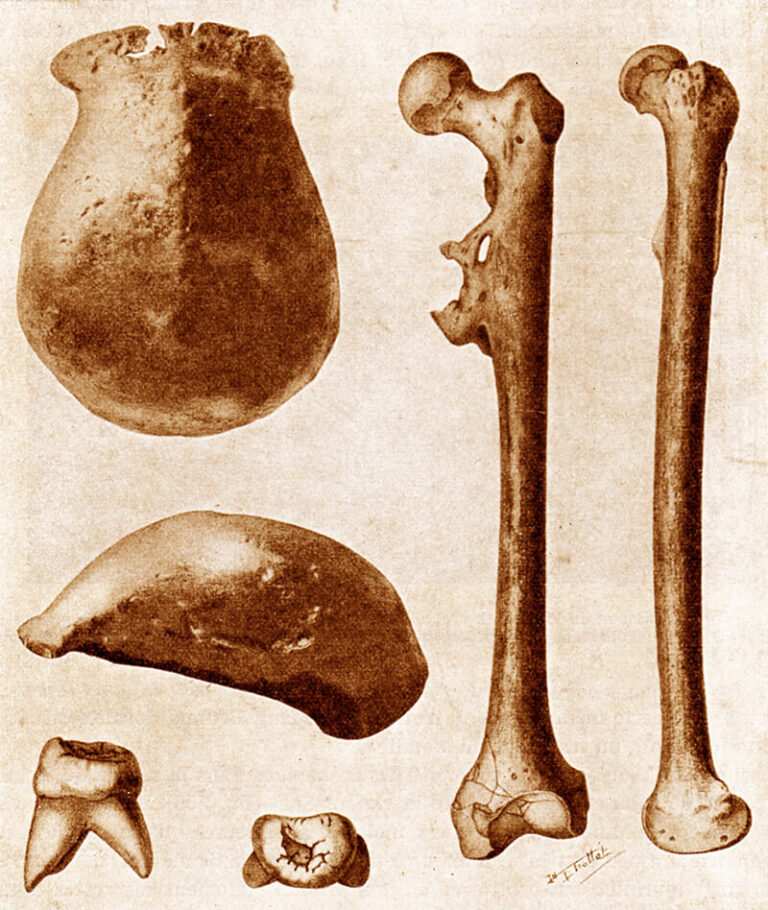
7. Looting the Lombok Treasure (Indonesia, 1894)
In 1894, Dutch colonial forces invaded the island of Lombok in Indonesia, leading to the seizure of a vast collection of valuables, collectively known as the “Lombok Treasure.” This trove included gold and silver objects, jewelry, and other cultural artifacts. While some items were returned to Indonesia in 1977, many remained in Dutch collections, prompting ongoing discussions about cultural restitution.
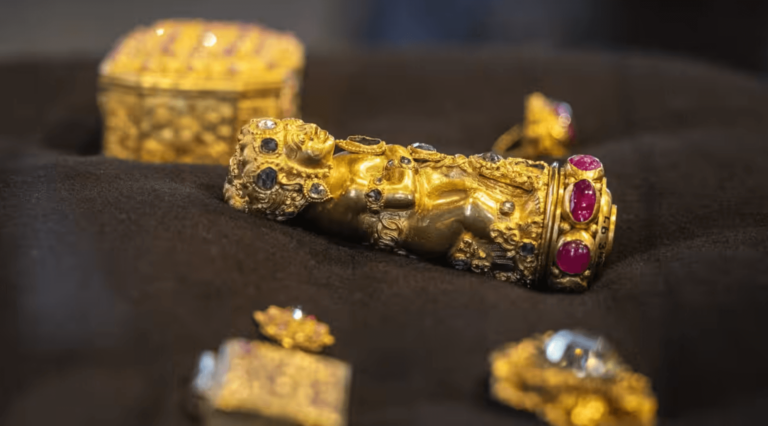
8. The Puputan Badung Collection (Bali, 1906)
In 1906, the Dutch military launched an attack on the kingdoms of Badung and Tabanan in southern Bali. This assault culminated in a mass ritual suicide known as “puputan,” resulting in the deaths of approximately 1,000 Balinese, including the king and crown prince of Tabanan. Following this tragic event, Dutch forces confiscated numerous artifacts, including royal belongings, coins, and weapons. These items were transported to the Netherlands and became part of various museum collections. In September 2023, the Netherlands repatriated 288 of these artifacts to Indonesia, acknowledging their cultural and historical significance.

9. Removal of the Ganesha Statue from East Java (19th Century)
In the 19th century, Dutch colonial authorities took a 13th-century stone statue of the Hindu deity Ganesha from a temple in East Java. This artifact was transported to the Netherlands, where it remained for over a century. In recent years, discussions have emerged regarding the restitution of such cultural artifacts to their countries of origin. The 800 year old Ganesha statue, along with other cultural artifacts, was officially handed over by the Netherlands to Indonesia recently on September 20, 2024, during a ceremony at the Wereldmuseum in Amsterdam.
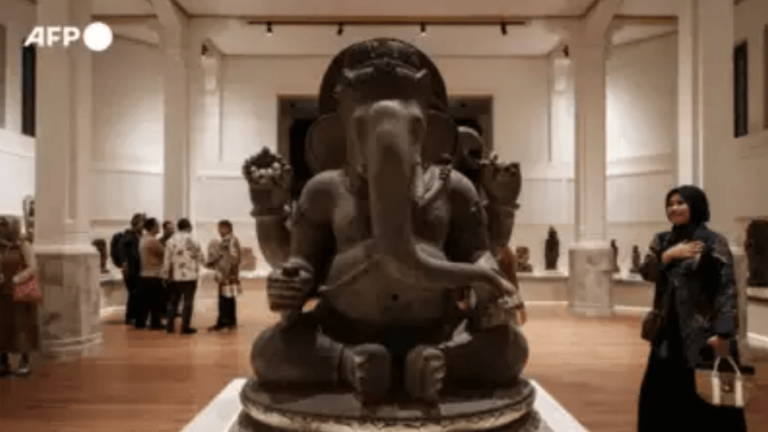
These instances illustrate the VOC’s involvement in the acquisition of cultural artifacts through military and colonial endeavors. The recent restitution of several of these artifacts reflects a growing recognition of the importance of returning cultural heritage items to their countries of origin, acknowledging historical injustices, and fostering international cooperation in preserving and celebrating cultural heritage.
Not all of these artifacts ended up in a Norwegian Museum though. Who knows exactly the extent of how much was looted and where it all ended up? Some are still in private collections, on display in the homes of the wealthy elite, and who knows where else?




